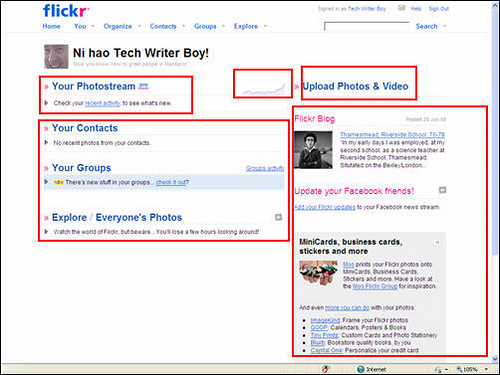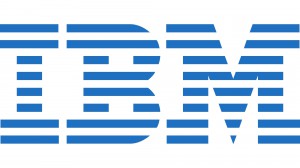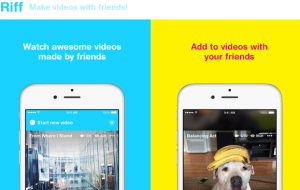Student
Peer-to-Peer Wireless Is Increasing Competition Worldwide
Most places around the United States have an incredibly limited number of ISP’s from which to choose their internet service. This means that a few big players control the pricing and the actual content that passes through their bandwidth. However, in a number of other countries including Spain and Uganda, private companies and individuals have worked on peer-to-peer networks that provide fast internet while usurping the prices of enormous corporations. This technology could disrupt the internet service provider market by providing a similar service at a substantially lower price. If so, this would cause current players in the market to actually compete instead of largely just divvying up the service geographically. This would also result in a significant step for net neutrality proponents because big ISP’s would no longer be able to monitor data so closely.
How else do you think that delivering internet through a peer-to-peer connection might affect the market? Do you see any negatives?
Marketing your startup

Marketing for a startup can be challenging. According to this article, marketing success is determined by combining the right channels of marketing content and PR. Before starting to market a new startup it is important to develop a marketing strategy to build a foundation. The following things need to be handled first. Choose a market, define keywords, define success, set core metrics, estimate conversion rate, and setting a budget.
Next is using the social media outlets that work best for your company and using them effectively. This is the most common way used today to try and reach people. I am sure that most of us will be implementing some use of social media with our applications. When using social media you want to focus on these things: Choosing the right social media networks, defining the best times to post, using a keyword list, creating and using an influence list, and setting up a blog.
PR also play a huge role in releasing a startup. Knowing what to say, when to say it, and who to say it to are the main focuses of PR. When dealing with PR within your company remember to: Create meaningful position statements, define your startup sensitivities, identifying the right writers for a media list, creating a press kit, and reaching out to journalists.
Once the PR is handled you want to start to think about the content creation. Although, we will not formally go into content creation, the rest of the article talked about content creation. When creating content for marketing you startup[ remember to: Create a topic list, know what types of content to publish (Newsletter, video, webinar, etc.), have guest blogging, and capture emails.
Now your marketing strategy is in full effect. Also, down the road think about testing and iteration. Your company can set up analytic tools, measure against benchmarks, and brainstorm creative new ideas You may want to also think about what successful startups have already done drive success. Focus on selling the solution, having a compelling story , and using all of your resources.
Has your group been using any of these tools when focusing on the marketing side of our project? I know we are not formally marketing our products, but some of these things come in handy when developing a marketing strategy.
Article: The Ultimate Guide to Startup Marketing
Cloud computing brings changes for IT security workers
IT security experts are struggling to compete with cloud computing. Because of the low cost and expertise received from vendors like Google and Amazon, security professionals are failing in determining configuration management processes. Configuration management means recording and updating data for software and hardware to know which applications are used on computers. This is difficult because it requires understanding what employees do in an organization, and why certain technologies are used to operate in the business. Since this is a difficult process and not all IT departments are aligned with the business, enterprises are turning to cloud providers who have a better understand for a lower price. Security professionals need to create a business case to gain support on using in-house employees instead of a vendor to combat this threat. The article recommends talking about how much money can be saved from removing software that is not part the configuration plan. If this trend continues, IT and enterprise computing could turn into a commodity and simply outsourced, which means less control and less peace of mind for the business.
How else do you think security professionals can compete against these vendors? Do you think that IT has a threat to be turned into a commodity?
IBM to Invest in IoT
IBM will invest $3 billion over four years to create an Internet of Things business unit. The focus of the unit will be on travel, logistics, insurance, public utilities, transportation, and retail. IBM plans on partnering with other companies for this project, such as AT&T and semiconductor companies. IBM also started that they are going to work with engine manufacturer, Cummins, to collect real time data on products. Whirlpool is also working with IBM to better predict when appliances need servicing. Additionally, police departments in Durham, NC and Memphis, TN use IBM products to target crime hotspots. The IDC estimates that there will be 28 billion IoT devices by 2021.
Do you agree that IBM should partner with other companies?
Do you think that IBM is too late, or are they entering the market at the right time?
Deloitte Threatened by Disruptive Innovations
This is a really short and informative article based on how big corporations like Deloitte view new and disruptive competitive risks and opportunities. They are crafting effective strategies around four dimensions you will find in the article, which could be used within our capstone projects.
Take a look and see….Deloitte
Delphi’s Autonomous Audi — Is the future within reach?
In this article by Car and Driver, Delphi, a car tech company that recently finished the first cross-country autonomous rode trip using a specialized Audi SQ5 is on display. The Audi, which was fitted with a variety of Delphi tech and a wild paint job, traveled over 3,400 miles and drove itself for 99% of the time, according to the company. That means that only approximately 35 miles out of an entire coast-to-coast road trip were controlled by a human. However, aside from the…unique…exterior color scheme, there were very few cues to tip anyone off that this is a self-driving car. This proof-of-concept Audi shows that driverless tech is, in my opinion, on the verge of mass deployment in the automotive industry. I think this tech will eventually disrupt existing insurance underwriting practices and government regulations the most. For insurance companies, a variety of parameters for how premiums are assessed (driver experience, age, etc.) will have to be reexamined in the wake of this new autonomous tech, potentially altering their bottom line. Do you think there are industries that will be disrupted in different ways?
Where is the Killer App for “The Connected Home”?

The “Connected Home”, a concept we talked about in class as part of the disruptive innovation section, currently has a low household penetration rate. According to this article on USAToday, NextMarket Insights reports that only 1.48 million American households had smart home systems by the beginning of 2014; this number, however, is projected to skyrocket to 15.03 households by 2019.As innovative as the idea is, not many Americans are aware of the concept and the technologies that currently back it. Apple, Samsung, Nest, and Google are among a slew of companies releasing dedicated technologies aiming to connect the home through “The Internet of Things” (and debuted many of these at this year’s CES conference, such as Apple’s HomeKit and Samsung’s SmartThings platform), but herein lies the problem: there is no standard method of connecting household appliances. Each company offers their own proprietary solutions, which doesn’t help when mixing and matching appliances and technologies; in other words, the different components of a connected home won’t necessarily be compatible with each other.
In order for these technologies to truly disrupt the market and gain a widespread adoption rate, many feel the need for a “Killer App“ to sway the majority of consumers into investing into the technology: one that is easy to use and provides a high level of standardization.
- What components do you guys think will be required in a “killer app” for a Connected Home, and who do you think is capable of pulling this off?
- Is there any established technology out there, such as Apple’s HomeKit (which allows hands-free Siri communication), that you think will eventually dominate the market?
- What is still missing in this sector that consumers have a need for that isn’t being provided?
- Lastly, do you agree with the household penetration projection for 2019?
NBCUniversal Redirects IT Focus to Innovation
Atish Banerjea, CIO at NBCUniversal, talks about his experience in improving IT’s image and performance at NBCUniversal. Banerjea states that IT just played a back office role at NBCUniversal. His goal was to move IT from the back office into business unit leadership. The first hurdle was the lack of investment for IT. Banerjea was able to gain support from Comcast, who recently acquired NBCU. Comcast gave capital to allow IT to invest in infrastructure and IT talent. He decided to make improvements where employees would notice changes. This included increasing email capacity, upgrading mobile and desktop devices, and improving the help desk. The most important move that Banerjea did was embedding CIO’s into the business units. This has allowed IT to create support for business units, and offer value from a business perspective.
Do you think embedding CIOs into business units is a good model or do you think they should be a separate entity?
What else do you think Banerja could do to improve IT at NBCUniversal?
Facebook Introduces Riff
In an attempt to make videos “stickier” on social media, Facebook recently debuted its own video app called Riff. This Forbes article details the app and the logic behind it.
The way the app works is that users post 20 second videos, and then their friends can also post videos that can then be added on to the original video. When a user signs up for the app with their Facebook account, they can start making videos instantly, and their friends will receive notifications when their friends create videos. These videos will be connected by a common hashtag, thus creating a sort of video story that can be shared across various social media sites. The idea behind the app is that it makes the creative process more fun, by allowing users to collaborate with their friends.
A Facebook algorithm showed that at this time, videos take up approximately 30% of the average user’s newsfeed. This trend is what propelled the creation of Riff, which Facebook hopes will continue the trend.
What are your thoughts on the app? Do you think it can stand up to Vine and Snapchat stories, or do you think it’ll be soon forgotten? Would you use it?
Clarity and Conciseness in User Interface Design

I created a post earlier in the semester that discussed what elements contribute towards “good” software; one of these elements is elegant design, which is lacking in software that is “clunky” as well as bothersome to navigate and use.
A component of design that is more specific and can be more easily analyzed is the user interface, which combines aesthetics with usability. I anticipate that creating a (somewhat) functional but polished user interface will be a challenge for project teams in general, so I located an article that describes what comprises a “successful” user interface.
The article’s author highlights clarity as “the most important element of user interface design” because it must simultaneously communicate meaning and function to users. Conciseness is the next most important element; it demands that designers be careful when adding explanations or definitions to their applications to avoid clutter and confusion. Professor Hohne called for a hybrid of clarity at conciseness while reviewing our prototype during a meeting on Tuesday: “I want to see green, yellow, and red status bars, not a whole lot of extra information.” With this remark, it became clear to me that a successful user interface may actually draw on the same principles as a successful status report document.
Having read through the linked article and this post, what steps should you take to keep your prototype’s user interface clear and concise? Will the responsibility of ensuring clarity and conciseness be left to one person on your design team, or to the entire team? Lastly, how might your approach differ if you had to produce a more complex application?







